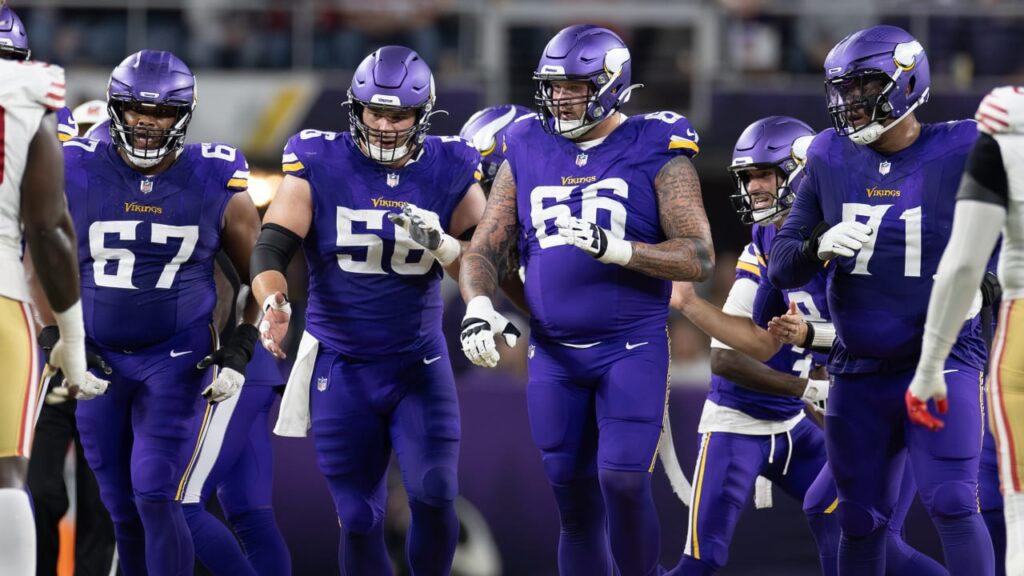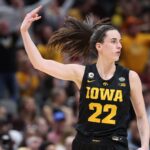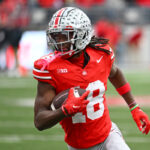Team History
The Minnesota Vikings boast a storied past in the NFL, starting from their foundation in 1961. The team emerged as an NFL franchise when a group of Minnesota businessmen were awarded a team, shifting their alliance from the American Football League (AFL) to the NFL under significant league pressure. This foundational period set the Vikings on a path marked by a deep connection to the local culture, evident in their name and the Scandinavian heritage that permeates the region. The team’s early years were marked by growth and the establishment of a strong fan base, despite the typical struggles associated with expansion teams in professional sports.
Throughout their history, the Vikings have been synonymous with resilience and competitiveness. Their all-time record reflects a tradition of success, including the highest regular-season winning percentage among teams that have not won a Super Bowl. The Vikings also hold the distinction of having the most playoff runs, division titles, and Super Bowl appearances without clinching the championship. This record is a testament to the team’s consistent quality and ability to compete at the highest levels of the sport, even though the ultimate prize has remained elusive.
Foundation and Early Years
The Minnesota Vikings’ journey began with their inception into the NFL in 1961, following an initial foray into the AFL. This period marked the beginning of professional football’s growth in Minnesota, a state with a rich football heritage that includes the Minneapolis Marines/Red Jackets in the 1920s and 1930s. The team’s name, colors, and identity draw heavily from the state’s Scandinavian American population, creating a unique cultural link that has endured over the decades. Their first season set the foundation for a franchise that would become known for its passionate fan base, distinct identity, and contributions to the NFL.
In the 1960s, under the leadership of people like Bud Grant, the Vikings began to assert themselves as a formidable NFL team. The era of the “Purple People Eaters” defense epitomized the team’s approach to football, combining hard-nosed defense with strategic play that would lead to significant achievements, including their first NFL Championship in 1969. This early period of success laid the groundwork for future endeavors and established the Vikings as a team capable of competing with the best in the league.
Notable Early Achievements
The late 1960s and early 1970s represented a golden era for the Minnesota Vikings, highlighted by their dominant defense and strategic offensive play. The team’s first Super Bowl appearance in 1970, although ending in a loss to the Kansas City Chiefs, symbolized their rise to prominence in the NFL. This era was marked by significant achievements, including multiple division titles and conference championships that showcased the team’s competitive spirit and ability to perform at a high level.
Subsequent years saw the Vikings continue to build on their early success, maintaining a strong competitive edge in the NFL. Despite facing challenges, including changes in leadership and player roster, the team remained a consistent force in the league. Their resilience and adaptability through periods of change have been hallmarks of the franchise, embodying the spirit of perseverance that has defined the Vikings throughout their history.
Periods of Change
The transition into the 1980s and 1990s was a period of significant change for the Vikings, characterized by adjustments in team management, coaching staff, and player roster. These years included the return of Fran Tarkenton to the team and shifts in management that would shape the team’s direction. Despite these changes, the Vikings continued to demonstrate their competitive nature, securing division titles and making playoff appearances that affirmed their status as a formidable NFL team.
This era also saw the Vikings navigating the challenges associated with maintaining a high level of performance in a rapidly evolving NFL landscape. The team’s ability to adapt to changes, both on and off the field, underscored a commitment to excellence and a focus on building a sustainable competitive advantage. These periods of change were critical in defining the Vikings’ identity, showcasing their resilience and determination to compete at the highest levels.
Championships and Achievements
The Minnesota Vikings have a storied history of achievements and championships that underscore their significance in the NFL, despite the elusive Super Bowl victory. With four conference championships under their belt—NFL Western in 1969, NFC in 1973, 1974, and 1976—the Vikings have demonstrated their ability to compete at the highest levels. These victories propelled them to Super Bowl appearances in those years, marking the team as perennial contenders during those decades. Their success during this period is a testament to the team’s dominance in the NFC and their formidable presence in the league.
Beyond their conference championships, the Vikings have also clinified an impressive number of division championships, amounting to 21 titles across the NFL Central, NFC Central, and NFC North divisions. This includes winning streaks that often saw the Vikings dominating their division and making regular playoff appearances, underscoring their consistent performance and resilience as a team. Their playoff history is extensive, with over 30 appearances, showcasing the Vikings’ ability to maintain a high level of play across different eras of the NFL. Despite not securing a Super Bowl win, the Vikings’ consistent success and deep playoff runs have solidified their legacy as one of the most competitive and enduring franchises in the NFL. This history of excellence, marked by significant divisional and conference wins, continues to fuel the team’s drive for that elusive Super Bowl championship.
Current Roster
The Minnesota Vikings’ roster for the 2024 season showcases a blend of seasoned veterans and promising newcomers, structured to enhance the team’s competitive edge in the National Football League (NFL). The offense is helmed by quarterbacks Jaren Hall, Nick Mullens, and Joshua Dobbs, indicating a strategic focus on depth and versatility in the quarterback position. At running back, Alexander Mattison leads the charge, supported by Ty Chandler, Kene Nwangwu, and Myles Gaskin, providing a robust ground game. The wide receiver positions are highlighted by the presence of Justin Jefferson, K.J. Osborn, Lucky Jackson, and Jordan Addison, aiming to offer dynamic options for the Vikings’ aerial attack.
On the defensive front, the Vikings have organized a lineup poised to challenge opponents across the board. The defensive line features players such as Jaquelin Roy and Jonathan Bullard, emphasizing strength and agility in tackling and pass rush. The linebacker corps, including Anthony Barr and Danielle Hunter, brings experience and athleticism, crucial for disrupting the opposing offenses. In the secondary, Byron Murphy Jr. and Akayleb Evans at cornerback, along with safeties Camryn Bynum and Harrison Smith, are set to fortify the team’s pass defense, aiming to limit the aerial advancements of their opponents.
The special teams unit is anchored by kicker Greg Joseph and punter Ryan Wright, providing reliability in field goal attempts and punting situations, respectively. Overall, the Vikings’ roster composition for the 2024 season reflects a well-rounded approach, balancing offense, defense, and special teams to forge a competitive squad in the quest for success in the upcoming NFL campaign.
Management and Coaching Staff
The Minnesota Vikings’ management and coaching staff for the 2024 season are integral to the team’s strategic planning and on-field performance. The team is led by Kevin O’Connell, serving as the head coach, with Kwesi Adofo-Mensah playing a vital role as the general manager. This duo marks their third year working together, aiming to enhance the team’s performance from the previous season. Under the ownership of Zygi Wilf for the 20th year, the Vikings are focused on making significant improvements and striving for success in the NFL.
The Vikings’ coaching staff features a blend of coordinators and position coaches dedicated to developing players and executing game plans across all facets of the team. Matt Daniels serves as the Special Teams Coordinator, bringing a focused approach to special teams strategy. Brian Flores holds the position of Defensive Coordinator, tasked with bolstering the Vikings’ defensive schemes. Wes Phillips is the Offensive Coordinator, orchestrating the offensive game plan, while Mike Pettine contributes as the Assistant Head Coach and Outside Linebackers coach, adding depth to the team’s defensive coaching expertise.
Position coaches play a crucial role in player development and game preparation. The team includes coaches for various positions such as tight ends, defensive assistants, offensive line, wide receivers, running backs, and quarterbacks, each bringing specialized knowledge and experience to their respective roles. This comprehensive coaching framework is designed to leverage the strengths of the Vikings’ roster, promote player growth, and achieve the team’s competitive objectives for the 2024 season and beyond.
Home Stadium Information
U.S. Bank Stadium, located in downtown Minneapolis, Minnesota, stands as the home of the Minnesota Vikings since its opening in 2016. This modern, enclosed venue was constructed on the site of the former Hubert H. Humphrey Metrodome and marks a significant upgrade, offering a state-of-the-art facility for both football games and a variety of other events. In addition to hosting Minnesota Vikings games, the stadium also accommodates early season college baseball games for the University of Minnesota Golden Gophers and has been a venue for significant events such as Super Bowl LII, the ESPN X Games, and the NCAA Final Four.
The design of U.S. Bank Stadium, by HKS, Inc., features a lightweight translucent roof and glazed entrances with giant pivoting doors, maximizing the entry of natural light and providing views of downtown Minneapolis. Its roof, the largest of its kind in North America, is made primarily of Ethylene tetrafluoroethylene (ETFE), designed to support heavy snow loads typical of Minnesota winters. Despite considerations for a bird-friendly design, the stadium’s reflective glass has led to a higher number of bird fatalities, prompting studies and recommendations to mitigate this issue.
U.S. Bank Stadium’s seating capacity can accommodate 66,860 attendees for most events, with the ability to expand to 73,000 for special occasions like concerts or soccer matches. It has set attendance records for various sporting events since its opening. The Minnesota Sports Facilities Authority (MSFA) owns and operates the stadium, which has quickly become an epicenter of excitement, opportunity, and Minnesota pride. In its first few years, it welcomed millions of visitors for hundreds of events, also hosting community events and tours, highlighting its role as a valuable asset to the State of Minnesota.
-
*********** ***** ******* *** ***** ** ************ **** ********* *****dd.mm.yyyy 00:00 PM
-
****** *********** **** ** ***** ****** *** **** *** ******: ********* *** ******* *** ****'* ****dd.mm.yyyy 00:00 PM
-
*********-***** ********: **** 6 **** *** ***** *** * ********* **** 7dd.mm.yyyy 00:00 PM
-
**********-************ *******: ****** ****ć, ******* *******, *** * ********* ********** ********dd.mm.yyyy 00:00 PM
-
********* **** ********* ** *** ***: ********* *** ********* ** ****** ******** **. *** *** *****dd.mm.yyyy 00:00 PM
-
****************** ******* **********: *** ********' **** ****dd.mm.yyyy 00:00 PM







